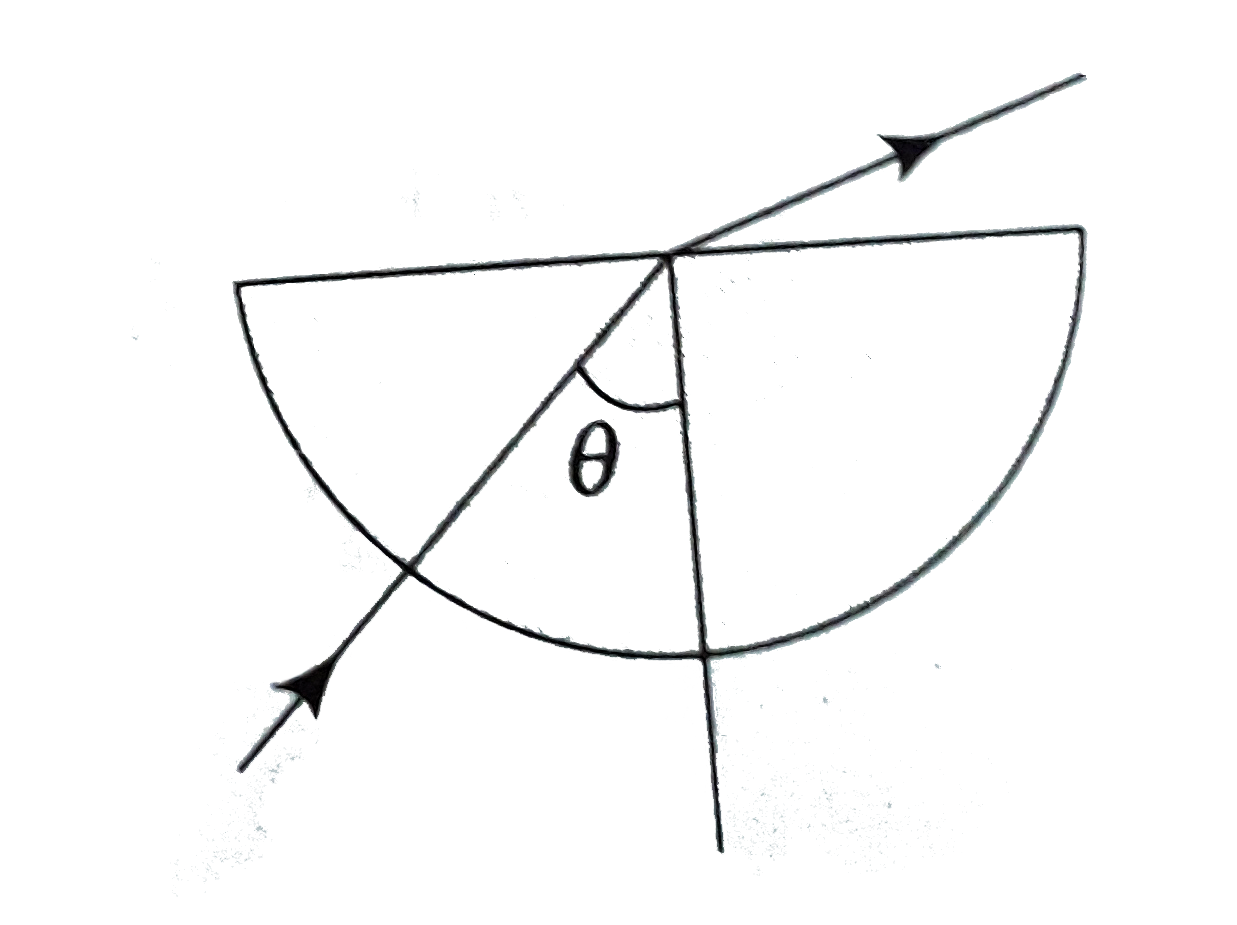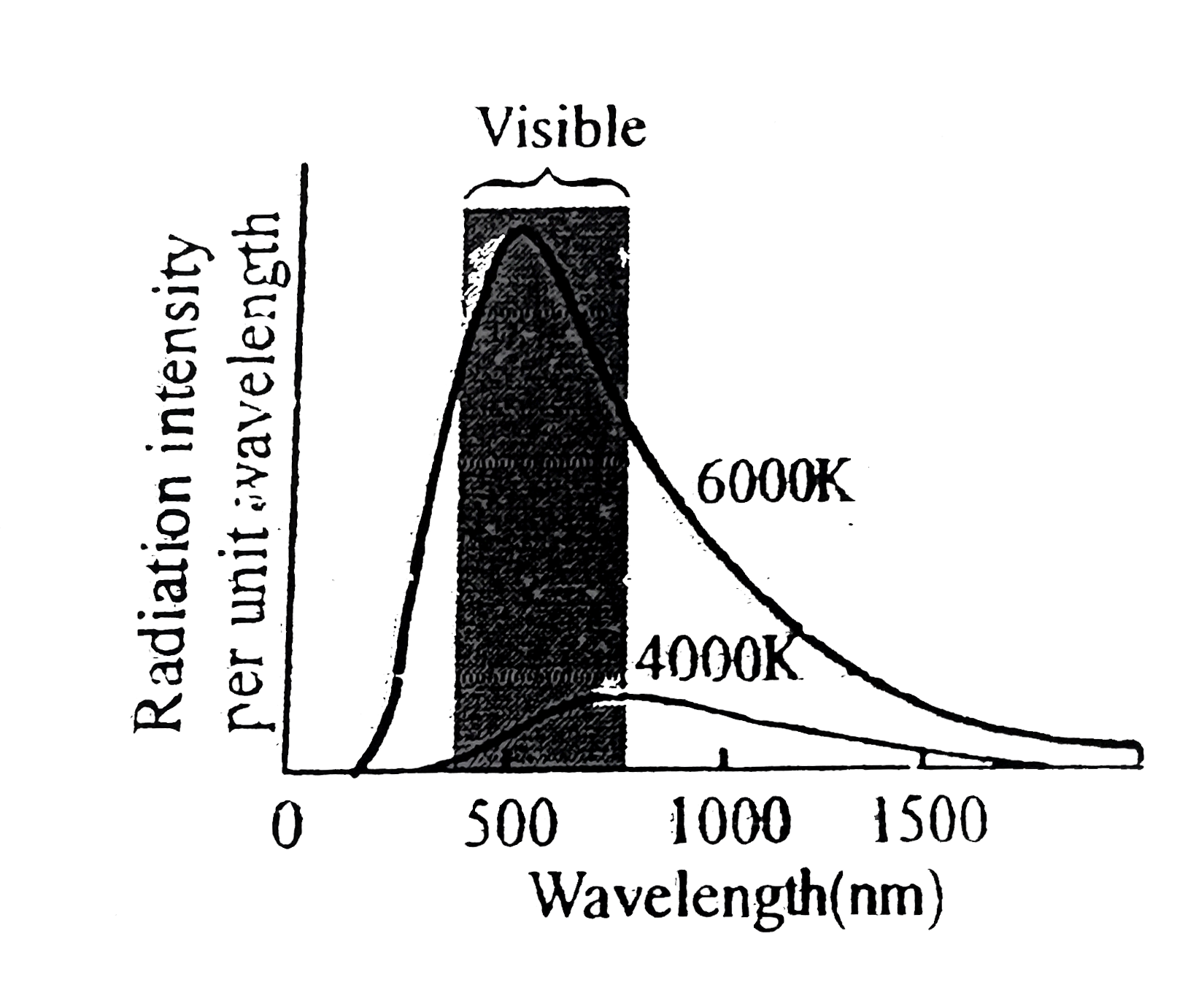The limits of the visible spectrum are 4000Å to 7000Å. Show that the violet of the thrid order visible spectrum overlaps the red of the second order spectrum produced by a plane diffraction grating having 15,000 lines per inch, when visible light is incident normally on the granting.
To solve the problem, we need to determine the angles at which the violet light of the third order and the red light of the second order will be diffracted by a plane diffraction grating. We will then check if these angles overlap.
Step 1: Determine the grating spacing (d)
The number of lines per inch is given as 15,000 lines/inch. We first convert this to centimeters:
Number of lines per cm=15000 lines2.54 cm≈5910.16 lines/cm
Now, the grating spacing d (the distance between adjacent lines) is the reciprocal of the number of lines per cm:
d=15910.16 cm≈0.000169 cm=1.69×10−5 cm
Step 2: Calculate the angle for red light (λ = 7000 Å)
Convert the wavelength of red light from Ångströms to centimeters:
λred=7000 Å=7000×10−8 cm=7×10−5 cm
Using the diffraction grating formula:
dsinθ=nλ
For the second order (n=2):
sinθred=nλredd=2×7×10−51.69×10−5≈0.8268
Now, calculate the angle:
θred=sin−1(0.8268)≈56∘
Step 3: Calculate the angle for violet light (λ = 4000 Å)
Convert the wavelength of violet light from Ångströms to centimeters:
λviolet=4000 Å=4000×10−8 cm=4×10−5 cm
Using the diffraction grating formula for the third order (n=3):
sinθviolet=nλvioletd=3×4×10−51.69×10−5≈0.7087
Now, calculate the angle:
θviolet=sin−1(0.7087)≈45∘
Step 4: Conclusion
The angles calculated are:
- Red light (2nd order): θred≈56∘
- Violet light (3rd order): θviolet≈45∘
Since θviolet<θred, the violet light of the third order overlaps with the red light of the second order.
The number of lines per inch is given as 15,000 lines/inch. We first convert this to centimeters:
Convert the wavelength of red light from Ångströms to centimeters:
Convert the wavelength of violet light from Ångströms to centimeters:
The angles calculated are:
- Red light (2nd order): θred≈56∘
- Violet light (3rd order): θviolet≈45∘
Topper's Solved these Questions
- WAVE OPTICSBOOK - SL ARORACHAPTER - WAVE OPTICSEXERCISE - Based on Wave nature of light
12 Videos
- WAVE OPTICSBOOK - SL ARORACHAPTER - WAVE OPTICSEXERCISE - Based on Young s Double Slit experiment
22 Videos
- WAVE OPTICSBOOK - SL ARORACHAPTER - WAVE OPTICSEXERCISE - EXERCISE
2 Videos
- UNIVERSEBOOK - SL ARORACHAPTER - UNIVERSEEXERCISE - PROBLEM_TYPE
6 Videos
Similar Questions
A plane transmissio grating when illuminated with normal light produces a second order diffraction at 30∘ for wavelength λ=500 Å. Calculate the number of lines per cm on the grating.
View SolutionSodium light of wavelength 5890 Å is incident normally on a diffraction grating of 5000 rulings per cm. Find the angle of diffraction for the second order.
View Solution
Knowledge Check
In a spectrometer experiment, monochromatic light is incident normally on a diffraction grating having 4.5×105 lines per metre. The seond order line is seen at an angle of 30∘ to the normal. What is the wavelength of the light?
A(a) 200nmB(b) 556nmC(c) 430nmD(d) 589nmStatement I: A beam of white light enters the curved surface of a semicircular piece of glass along the normal. The imcoming beam is moved clockwise (so that the angle θ increases), such that the beam always enters along th enormal to the curved side. Just before the refracted beam disappears, it becomes predominantly red.
Statement II: The index of refraction for light at the red end of the visible spectrum is more than at the violet end.
 AStatement is True, Statement II is True, Statement II is correct explanation for Statement IBStatement I is True, Statement II is True, Statement II is NOT a correct explanation for Statement I.CStatement I is True, Statement II is False.DStatement I is False, Statement II is True.
AStatement is True, Statement II is True, Statement II is correct explanation for Statement IBStatement I is True, Statement II is True, Statement II is NOT a correct explanation for Statement I.CStatement I is True, Statement II is False.DStatement I is False, Statement II is True.All bodies, no matter how hot or cold, continuously radiate photons. At a given temperature, the intensities of the electromagnetic waves emitted by an object vary from wavelength to wavelength throughout the visible, infrared, and other regions of the spectrum. Figure illustrates how the intensity per unit wavelength depends on wavelength for a perfect blackbody emitter. Although this figure can strictly be applied only to a black body, yet this will approximately discribe the behavior of many of the self radiating systems. For example, sun has an approximate temperature of 6000K. it is not a black body, it has an emissivity of nearly 0.6 But its peak almost occurs at a wave length that predicted by Wein's law. Suppose we have a bulb of power 100W. It emits only about 5W as visible light, rest is emitted as infrared radiated. Assume that the bulb filament has a surface area of 10mm^(2) (hc=1250eV−nm)

Assume that the light emitted by the bulb in the visible region is entirely of wavelength 500 nm. What is the number of photons emitted per second in the visible region?A1.25×1019B5×1019C2.5×1019D4×1019
How many orders will be visible if the wavelength of the incident radiation is 5000 Å and the number of lines on the grating is 101319 per metre.
View SolutionA parallel beam of monochromatic light is incident normally on a plane transmision grating having 5000 lines per cm and the second order spectral ,ine is found to be diffracted through 30∘. Calculate the wavelength of light used.
View SolutionSelect the appropriate options and complete the following paragraph. (spectrum, dispersion, grey, green, maximum, minimum, electromagnetic, refraction, optical, intense)
Light is an ___ radiation. The process of separation of light into its component colours while passing through a medium is called as of light. The band of coloured components of a sunlight beam is called its ___ Various colours appearing in the spectrum are of the order as violet, indigo, blue, yellow, orange and red. Different colours have different wavelengths which are visible to our eyes i.e., between 400 nm and 700 nm. Red light has ____ wavelength whereas violet light has ____ wavelength.
View SolutionA plane light wave with wavelength λ=0.50μm falls normally on the face of a glass wedge with an angle Θ=30∘. On the opposite face of the wedge a transparent diffraction grating with period, d=2.00μm is inscibed, whose lines are parallel to the wedge's edge. Find the angles that the direction of incident light froms with the directions to the principle Fraunhofer maxima of the zero and the first order. waht is the highest order of the spectrum? At what angle to the direction of incident light of the observed?
View SolutionA thin film having refractive indexμ = 1.5 has air on both sides. It is illuminated by white light falling normally on it. Analysis of the reflected light shows that the wavelengths 450 nm and 540 nm are the only missing wavelengths in the visible portion of the spectrum. Assume that visible range is 400 nm to 780 nm.
(a) Find thickness of the film.
(b) Which wavelengths are brightest in the interference pattern of the reflected light?
View Solution
